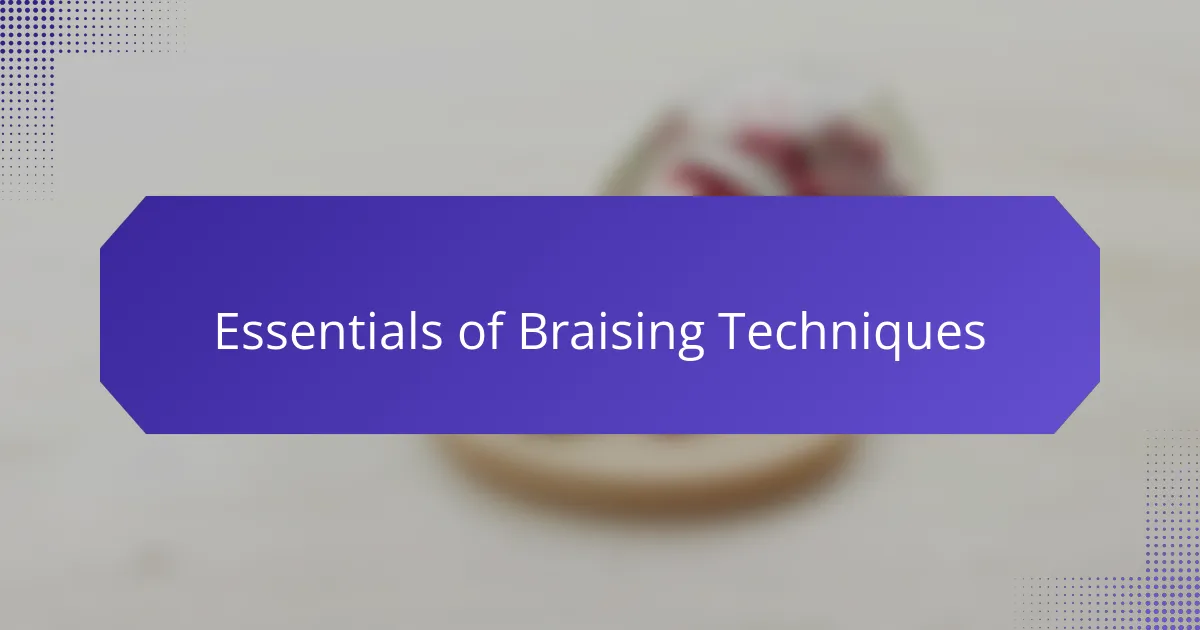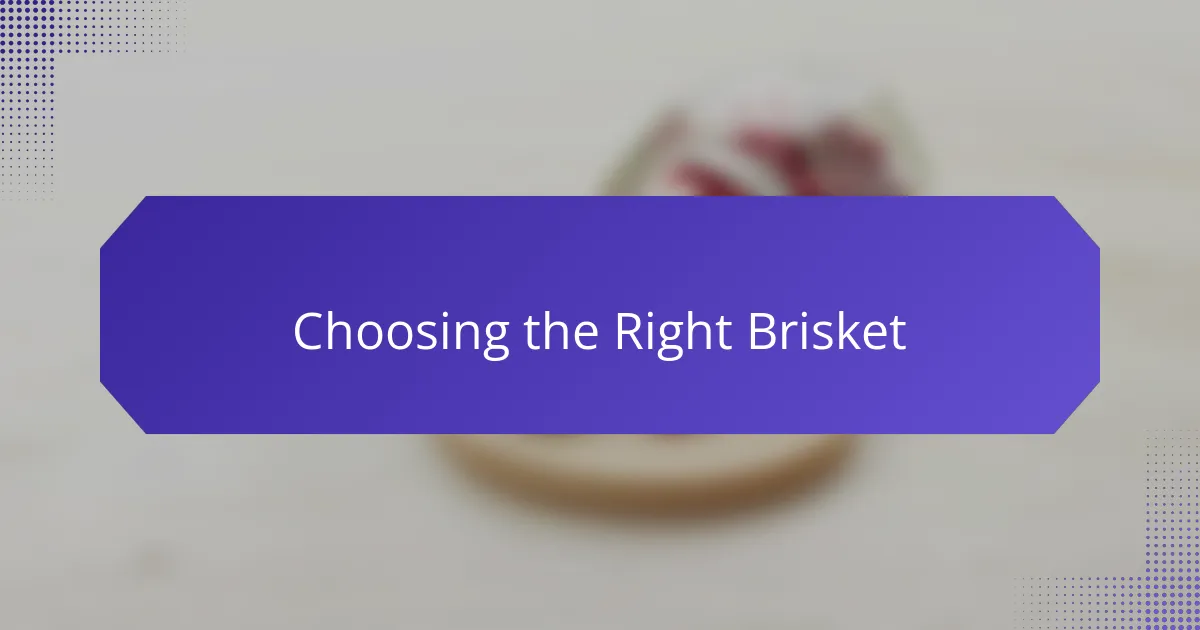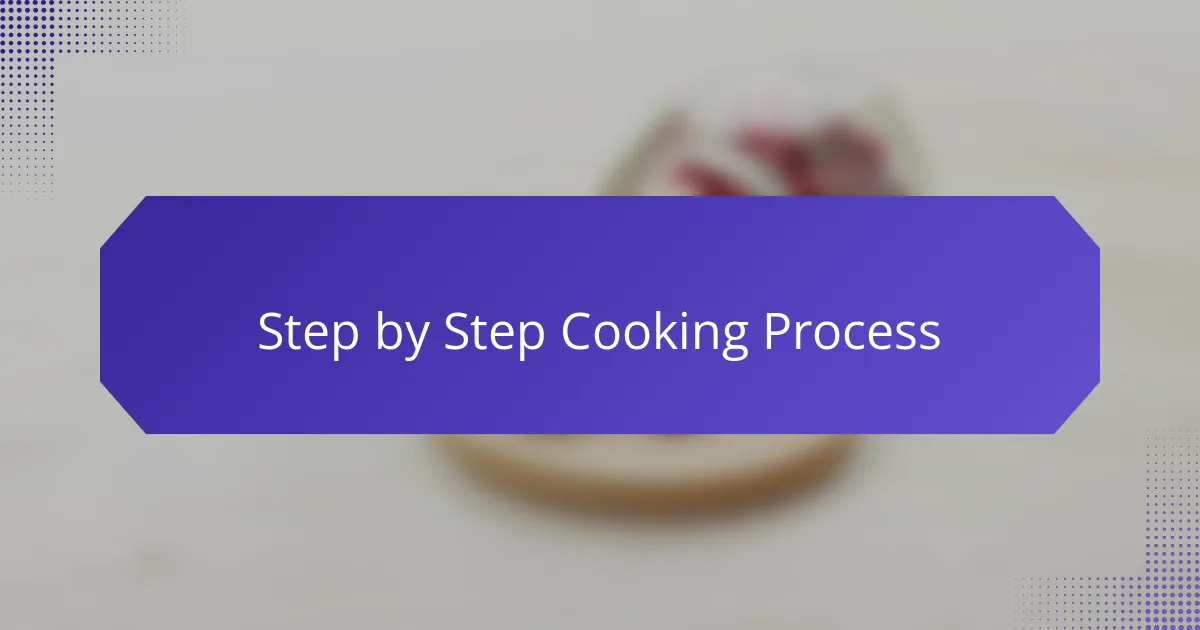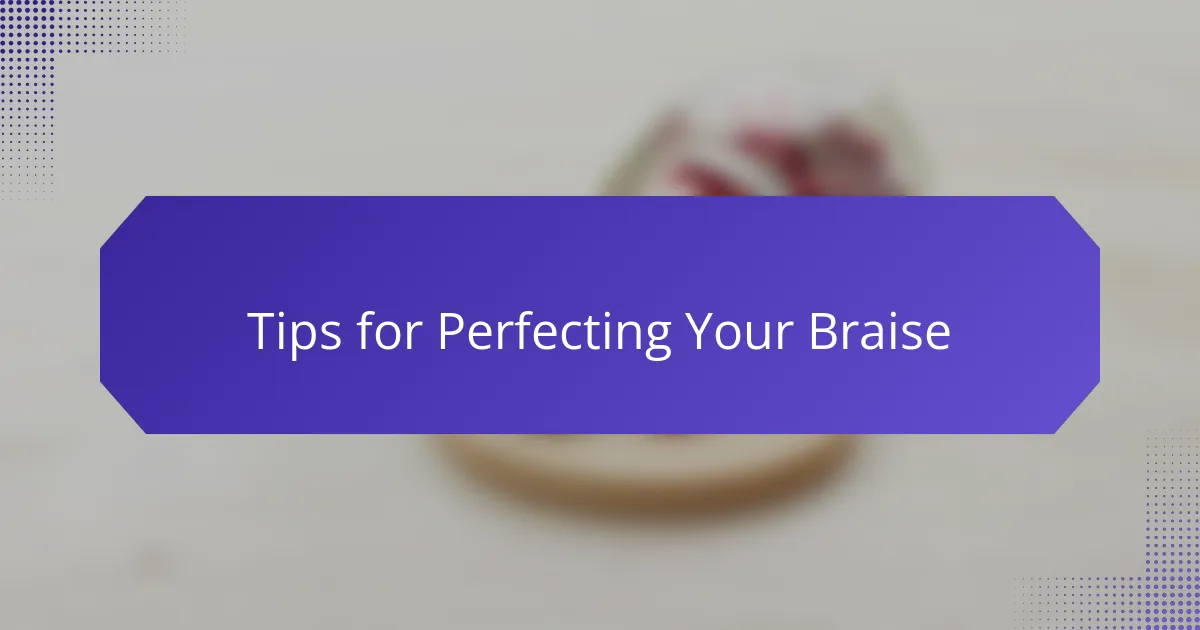Key takeaways
- Cooking challenges offer a chance to push culinary boundaries and rediscover the joy of cooking.
- Braising techniques, particularly with a Staub cocotte, enhance flavor and tenderness by combining searing and slow cooking methods.
- Choosing a well-marbled brisket ensures juiciness and flavor during the braising process.
- Patience is essential in cooking; allowing the brisket to rest post-braising enhances the overall flavor experience.

Cooking Challenge Recipes Overview
Cooking challenge recipes are about pushing your culinary boundaries and exploring new techniques. I remember the first time I tackled a complex dish, feeling the thrill of both excitement and apprehension. Each recipe serves as an opportunity to learn, grow, and often, share a meal with loved ones.
When you choose a cooking challenge, it’s like embarking on a mini-adventure in your kitchen. What if the dish doesn’t turn out as planned? The beauty is in the process, and I’ve found that even mishaps often lead to delightful surprises. Engaging with a challenge can ignite creativity and foster a deeper connection with food and cooking.
These recipes aren’t just about impressing others; they’re about rediscovering your passion for cooking. I find that the journey is just as meaningful as the final result, whether it’s a perfectly braised brisket or a slightly charred creation. So, what will your next challenge be, and how will it inspire you?

Essentials of Braising Techniques
When I first delved into the world of braising, it felt like unlocking a culinary treasure chest. The essential technique combines both dry and wet cooking methods, allowing you to transform tough cuts of meat like brisket into meltingly tender dishes. I remember my first attempt; the aroma that filled my kitchen was simply intoxicating, hinting at the savory goodness to come.
One of the most crucial steps in braising is searing the meat before adding any liquid. This not only develops a rich brown crust but also enhances the overall flavor profile. With the Staub cocotte, heat retention is impressive, leading to perfectly browned meat every single time. It’s a game-changer in my kitchen!
Another key to successful braising is patience. Once the meat is in the pot, it’s tempting to peak, but letting it slowly bubble away allows the flavors to meld beautifully. I’ve found that checking on it infrequently builds the excitement, and I can hardly hold back my eagerness as I await the succulent results.
| Braising Technique | Description |
|---|---|
| Searing | Quickly browning the meat to develop flavor. |
| Slow Cooking | Gently cooking the meat in liquid over low heat for an extended period. |
| Moisture | Using broth, wine, or other liquids to enhance flavor and tenderness. |
| Covering | Keeping the pot covered traps steam, aiding in the cooking process. |

Benefits of Using a Cocotte
Using a cocotte, especially a Staub, makes a world of difference when braising brisket. These cast iron pots heat evenly, ensuring that every part of the meat is cooked thoroughly. I remember my first time using a cocotte, the aroma that filled my kitchen was simply irresistible, inviting family around the dinner table in anticipation of a warm and hearty meal.
Another benefit is the ability to retain moisture. The tight-fitting lid creates a sealed environment that traps steam, which is essential for braising. I found that my brisket turned out tender and juicy each time, making it a go-to recipe for special gatherings. Plus, the gorgeous design of a Staub cocotte makes it a stunning centerpiece for serving.
When you use a cocotte, you’re investing in quality. It’s not just functional but also a beautiful addition to your kitchen. I often find myself reaching for it, knowing that it not only performs well but also adds a touch of elegance to my cooking experience.
| Feature | Traditional Pot | Staub Cocotte |
|---|---|---|
| Heat Distribution | Uneven | Even |
| Moisture Retention | Poor | Excellent |
| Durability | Variable | High |
| Serving Appeal | Basic | Elegant |

Choosing the Right Brisket
Choosing the right brisket can make all the difference in your braising adventure. I’ve always found that selecting a well-marbled brisket is crucial. The fat running through the meat not only adds flavor but also keeps it moist during the long cooking process. Have you ever had a dry piece of brisket? It’s disappointing, isn’t it? That’s why I pay close attention to the marbling.
Another important factor is the cut of brisket. There are generally two main cuts: the flat and the point. I personally gravitate towards the point cut when braising; it’s fattier and more flavorful, which makes it perfect for low and slow cooking. The flat cut can be a bit leaner, which is great for slicing but doesn’t always yield the juicy results I’m after. I’ve learned that sometimes, you’ve got to choose richness over health for those special occasions.
Additionally, when buying brisket, I recommend looking for a bright red color with minimal grey or brown spots. Freshness matters! I once made the mistake of grabbing a less-than-perfect piece, and the end result was a far cry from what I envisioned. When I find a beautiful brisket at the butcher, it feels like finding treasure, setting the stage for a heavenly meal. So, next time you’re at the market, keep these tips in mind, and I guarantee you’ll be on your way to a fantastic braised brisket experience.

My Braised Brisket Recipe
Braised brisket has always held a special place in my heart and my kitchen. I remember the first time I tackled this dish in my Staub cocotte; the aroma that filled my home was intoxicating. This particular method made the brisket melt-in-your-mouth tender while maintaining a robust flavor profile that made the effort completely worth it.
Here’s how I like to prepare my braised brisket:
- Choose the right cut: I always opt for a well-marbled brisket, as it yields juiciness during the cooking process.
- Season generously: A generous sprinkle of salt and pepper before searing enhances the flavor.
- Sear in the cocotte: Browning the meat on all sides adds a deep flavor and a satisfying crust.
- Add aromatics: I love weaving in onions, garlic, and herbs; they infuse the meat with incredible depth as it braises.
- Low and slow cooking: I usually let it braise in the oven for around three hours, which gives me just enough time to catch up on my favorite show—yes, that’s multitasking at its finest!
- Rest before slicing: Allowing the brisket to rest allows the juices to redistribute, ensuring every bite is juicy.
Each step feels like a labor of love that I truly enjoy. If you’re looking for a dish that brings warmth and comfort, my braised brisket recipe might just be what you need.

Step by Step Cooking Process
When it comes to braising brisket in a Staub cocotte, each step holds a little magic. First, I seasoned the brisket with salt and pepper, feeling the spices blend into the meat. This initial seasoning sets the stage for a deeply flavored dish. Then, I seared the brisket in the cocotte, relishing the sizzle and aroma filling my kitchen—it’s one of my favorite parts of cooking.
Afterwards, I added onions, garlic, and a splash of red wine, which instantly transformed the dish. As the cocotte simmered, I couldn’t help but smile, imagining how the flavors would meld together. The final touch was letting it braise gently in the oven for several hours, where the anticipation built, knowing that the result would be tender, juicy, and absolutely delicious.
Here’s a comparison of key steps in the process:
| Step | Description |
|---|---|
| Seasoning | Coat the brisket with salt and pepper to enhance flavor. |
| Searing | Brown the brisket in the cocotte for added depth of flavor. |
| Additions | Incorporate onions, garlic, and wine to create a rich sauce. |
| Braising | Slow cook in the oven for tenderness and flavor absorption. |

Tips for Perfecting Your Braise
When perfecting your braise, don’t underestimate the power of seasoning. I’ve learned that a good rub of salt and pepper not only brings out the natural flavors of the brisket but also sets a solid foundation for the complexity that unfolds during cooking. It’s that first step of seasoning that gets me excited—almost like the crisp anticipation right before a show starts.
Timing plays a pivotal role too. Once I’ve set everything in the cocotte, I resist the urge to poke around. It’s tough, right? But I’ve discovered that patience really does pay off. Leaving the brisket undisturbed allows the flavors to deepen and meld; when the pot finally opens, the aromatic reveal feels like the grand finale, and I can hardly wait to dive in!
Lastly, remember to let your brisket rest after braising. This is often where the magic happens! Allowing it to sit for about 20 minutes means that each slice is packed with juicy goodness. I find myself eagerly cutting in, knowing how those flavors have connected during their time together in the cocotte—it’s more than just a meal; it’s a celebration of flavors and patience.


